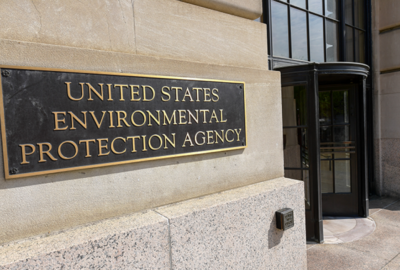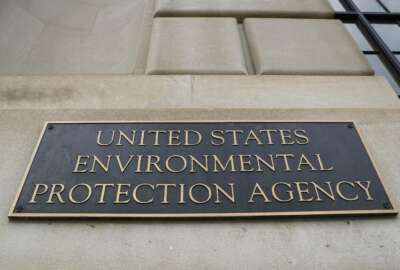
EPA gets long to-do list from its inspector general
Climate change and what is known as environmental justice top the list of management challenges for the Environmental Protection Agency this year. No surprise...
Climate change and what is known as environmental justice top the list of management challenges for the Environmental Protection Agency this year. No surprise there. But the EPA’s office of inspector general, in its annual listing, found several other priorities. For details, the Federal Drive with Tom Temin talked with supervisory auditor Claire McWilliams.
Interview Transcript:
Tom Temin And this is something that your office does every year to look at the top management challenges. And it seems like they’re similar to the ones last year.
Claire McWilliams Yes, that’s definitely correct. We identified seven top management challenges this year. Four of them are essentially carried over from the year before, but three of them have changed or were added.
Tom Temin All right. Let’s start with the added ones.
Claire McWilliams One new challenge is managing grants, contracts and data systems. This centers on the agency’s ability to create and maintain effective business operations for distributing billions of dollars in grants and contracts. We also added the challenge overseeing, protecting and investing in water and wastewater systems. This includes cybersecurity, which was a challenge last year, but also physical security of water and wastewater systems. And this year we revised the Scientific Integrity Challenge to include promoting ethical conduct. We believe that maintaining an ethical culture is particularly important, given the agency hiring plans to oversee billions of additional funding under the Infrastructure Investment and Jobs Act and the Inflation Reduction Act.
Tom Temin And is there any evidence so far in any of the investigations that there has been unethical behavior? It’s just something that they need to pay attention to because of all this money showered on agencies through some of these big laws.
Claire McWilliams There have been findings throughout the years, but a main reason we include that is because of the additional funding under the new laws.
Tom Temin And by the way, what’s the general methodology by which you come up with these questions? In the example of water and wastewater systems, you know, there have been some serious shortcomings in the news throughout the last couple of years with local water systems and their ability to deliver potable water and so on. How did that make the EPA’s list of management priorities?
Claire McWilliams Well, we base our top management challenges on the work that we have already done. So that’s through our prior year’s oversight work. And we also solicit input from EPA senior leadership. We consider U.S. Government Accountability Office reports. We consider issues raised by media coverage, congressional hearings and public statements, and how the EPA’s programs address challenges identified in previous fiscal years.
Tom Temin I want to go back to grants and contract management and data systems. That’s a wide range of things. But the grants and the contracts are big dollars, and the data systems maybe track it all. Are they, in fact related as kind of one complex of issues?
Claire McWilliams They are most definitely related. As you mentioned, it’s big dollars. About half of the EPA’s annual budget is distributed through grants to states, local governments, tribes, and other eligible entities. The EPA’s ability to carry out its mission depends on effective management of grants, contracts, and data systems.
Tom Temin And have there been issues there too?
Claire McWilliams Yes. In 2023, IG O’Donnell testified twice before Congress, and in his opening statement for the two separate hearings, he mentioned the sizable EPA funding increase and how this increase increases the needs to ensure that grants, contracts and data systems are prepared to properly administer and report on EPA funds.
Tom Temin You must have some incidents or examples in mind.
Claire McWilliams So I do have some examples of the reports that we’ve recently issued. Today, the EPA, OIG released an audit report finding that the EPA office of the Chief Financial Officer provided USA spending.gov with financial data that was not complete and accurate for fiscal year 2022.
Tom Temin I saw that press release come through, so we’ll follow up on that one later on.
Claire McWilliams Yeah. That agency underreported its award level obligations by 1.2 billion and underreported its outlays by 5.8 billion. The EPA corrected the fiscal year 2022 reporting in USA spending Dot. But there are still corrective actions to be completed.
Tom Temin We’re speaking with Claire McWilliams. She’s a supervisory auditor at the EPA Office of Inspector General. And yes, grants are definitely a big item. Many other examples in that grants area since that did get added this year. And it’s also kind of a government wide issue to grants management, even at the white House level. That’s something they’re looking at generally.
Claire McWilliams Yeah, we recently had a report go out on the Clean School bus program. On December 27th, we released this management Implication report. It was sent to the EPA proactively to alert the agency of the potential for fraud, waste, abuse and mismanagement even though the oversight work is ongoing. Based on the initial findings, the agency asked for suggestions to help prevent fraud, and we were able to provide those recommendations in this report. We also issued a management implication report in September of 2023 on the lack of readily accessible data for the EPA’s Small Business Innovation Research Program. The agency is storing this data in a way that makes it difficult for the OIG and the EPA to access the data, and to conduct effective oversight of the program.
Tom Temin Let me ask you this. Is there any evidence that hiring, and personnel and human capital are an issue? Because with all of this money, EPA has to get people in to execute some of these programs, and they’re not alone, you know, in that among federal agencies. So, is that maybe an ancillary issue that didn’t make it directly into the top management issues, but maybe underlies everything they’re doing?
Claire McWilliams Yeah, absolutely. Staff is a cross-cutting issue that’s applicable to many of the EPA top management challenges. And we did mention it throughout the report, specifically in the Chemical Safety Management Challenge. Enforcement of compliance with laws and regulations, scientific integrity, and in the grant, contract and data systems challenges the increased funding through IIJA and IRA make having adequate staffing even more crucial.
Tom Temin And I wanted to ask you about the second item on the list, and that is integrating and implementing environmental justice. We’re talking to the EPA and not the Department of Justice. And what is environmental justice in the context of the EPA, and what should they be doing to make sure that they give it?
Claire McWilliams Sure. Integrating and implementing environmental justice. It involves EPA’s leadership role in the federal effort to identify and address disproportionately high and adverse human health and environmental impacts on low income and minority communities.
Tom Temin Got it. And so, this is an EPA responsibility.
Claire McWilliams It’s not just a responsibility of the EPA. It is across the federal government to make sure that there is fair treatment and meaningful involvement of all people, regardless of race, national origin, income and education levels.
Tom Temin And I think that would be another area where you would need data and evidence, and not just simply the fact that there are two things side by side and therefore there’s a cause and effect otherwise.
Claire McWilliams Absolutely.
Tom Temin And so that gets almost to the scientific integrity issue.
Claire McWilliams That’s correct.
Tom Temin So would you say then that the top seven management issues really are all of maybe a given piece in some sense?
Claire McWilliams Yes. A lot of them are related to each other and are essential to EPA, effectively carrying out its mission.
Tom Temin Sure. And you know when your partners at the Government Accountability Office land a report, there is often a statement of what the agency reaction was in the IG reports. Is there an agency reaction? And, you know, what do they say about this report? Do they say, now we’re solving all these or do they say, yeah, we probably should take a look at these.
Claire McWilliams I would say that they know these are issues before we publish a report. We do send it to the EPA, and they have a chance to respond. So, their responses are sometimes incorporated into the report. And they are aware of the issues, and they are working on the issues.
Copyright © 2025 Federal News Network. All rights reserved. This website is not intended for users located within the European Economic Area.
Tom Temin is host of the Federal Drive and has been providing insight on federal technology and management issues for more than 30 years.
Follow @tteminWFED





